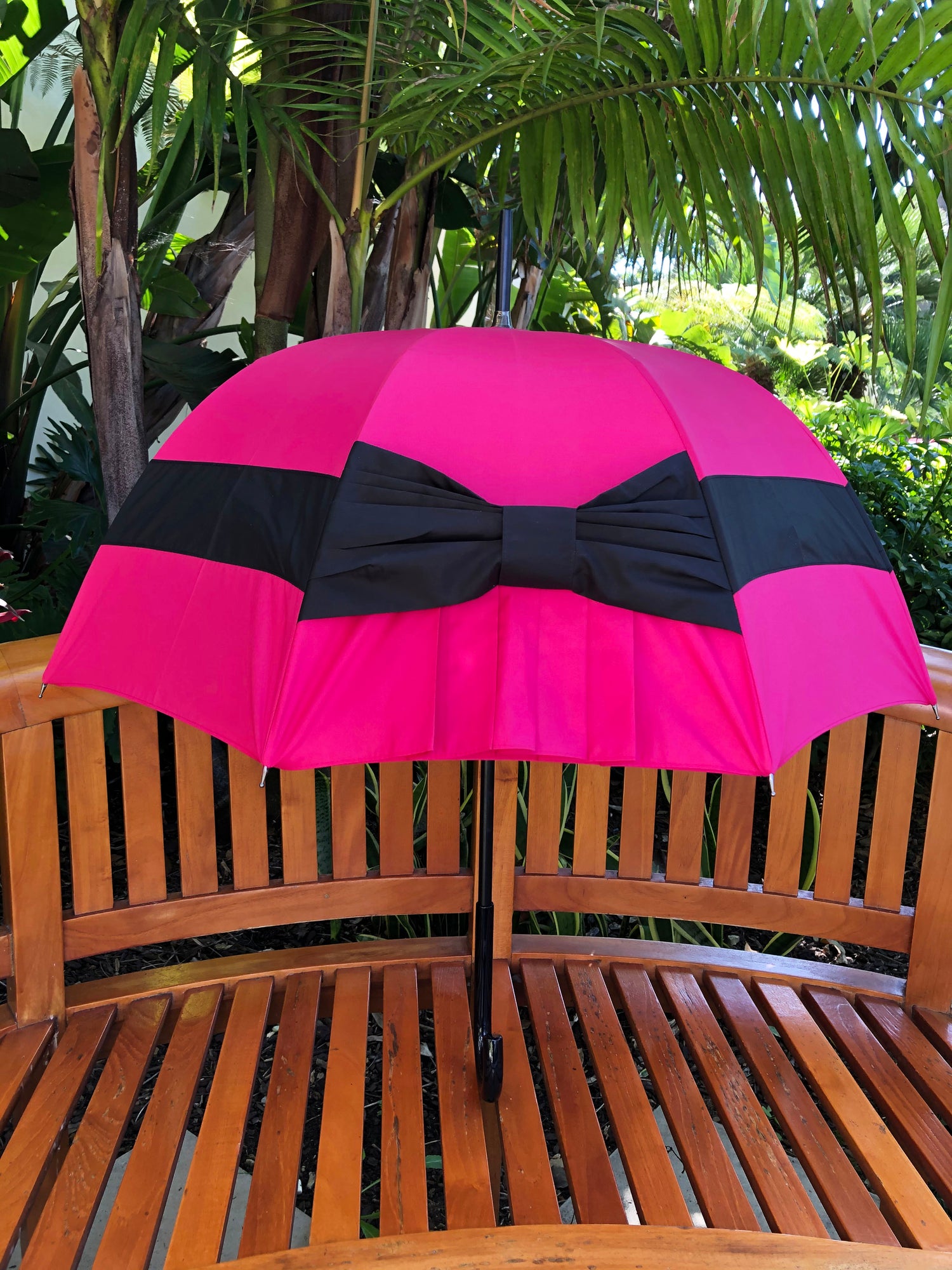FAQs
Q: Is your online store your entire collection?
A: No, our full collection is only available at large events, such as state and county fairs across the country. However, we’re happy to help you find the perfect umbrella—just reach out to us at Leabrig66@yahoo.com. Mireille will personally assist you in finding your ideal umbrella.
Q: How is Leabrig different from other umbrella stores?
A: At Leabrig, we believe umbrellas are more than just functional tools—they are fashion statements.
- We search the world for umbrellas with distinct flair. The pagoda shape—unlike the traditional flat umbrella design—stands out as the perfect choice. This unique shape instantly transforms an umbrella into a fashion statement, elevating its look with subtle sophistication that catches the eye often without people even realizing why.
- We carry a curated selection of umbrellas from France, Italy, Denmark, China, Ukraine, Africa and England. Many of these are exclusive, hard-to-find pieces, with some designs made strictly for Leabrig.
- With 15 years of experience selling umbrellas at large events such as county and state fairs events before expanding online, we refined our product selection by testing items firsthand. This allowed us to eliminate lower-quality products and offer only the best to our customers. That said, while we aim for quality across all price points, a $20 umbrella will never match the craftmanship of a $200 handmade piece!
Q: Do you offer folding umbrellas in a pagoda shape?
A: We are frequently asked about folding or compact umbrellas with a pagoda shape. Unfortunately, the pagoda design requires the full length of an umbrella to achieve its distinctive look, so folding versions of this style are not available.
Q: How is a parasol different from an umbrella?
A: The key difference lies in their purpose. An umbrella is specifically designed to protect against rain, meaning it is waterproof by nature. A parasol, on the other hand, is primarily a decorative accessory for sun protection and isn’t always waterproof. That said, any umbrella can double as a parasol if it’s stylish enough to accompany you on a sunny stroll. Our designs blur the line between the two, offering beautiful umbrellas that work perfectly for both rain and shine.
Q: Do dark-colored umbrellas make you hotter in the summer?
A: While dark colors can attract heat in certain situations (like on the roof of a house where heat is trapped in a closed environment), an umbrella works differently. Its open design allows air to flow naturally, preventing heat from accumulating.
The critical factor in staying cool is how much light the fabric blocks. Dark-colored umbrellas significantly reduce light penetration, offering more shade and minimizing heat. The temperature under the umbrella will match the ambient temperature, with the added cooling benefit of shade. For the best protection and comfort, choose darker or blackout umbrellas.
Q: Do anti-UV umbrellas provide shade?
A: Not necessarily. An anti-UV umbrella is designed to block ultraviolet rays, but that does not mean it provides cooling shade. A white umbrella, for example, may have an anti-UV treatment but will not offer the same cooling comfort as a dark-colored anti-UV-treated one.
If a fabric is not specifically UV-treated, we recommend choosing a thicker, dark-colored, or double-layered umbrella to minimize the amount of light and UV rays passing through.
Among all possible options to minimize UV penetration, a new generation of umbrellas called "blackout" umbrellas has emerged. These umbrellas are single-layered and feature a plasticized canopy with a black inner side that fully blocks both light and UV rays. Unlike fabric umbrellas, this design allows the outer side of the canopy to be light-colored while still providing full shade and UV protection.
UV rays can also be reflected off surfaces like pavement, sand and water. This means even under an anti-UV umbrella, UV exposure is possible due to ground reverberation. Consider wearing sunscreen, sunglasses and protective clothing in addition to using a UV umbrella.
Q: Is it really bad luck to open an umbrella indoors?
A: This belief has roots in various historical and cultural contexts:
- Ancient Egypt: Umbrellas were used to protect nobility from the sun and symbolized the goddess Nut. Opening one indoors, away from the sun, was seen as disrespectful to the sun god Ra and thought to invite misfortune.
- Victorian England: Early umbrellas had stiff, spring-loaded mechanisms, and some couldn't be closed once opened. Opening them indoors could cause accidents or damage, which contributed to the notion of bad luck.
- Practical Concerns: In confined spaces, opening large umbrellas could injure people or break items, leading to the superstition as a cautionary tale.
At Leabrig, we've been opening umbrellas indoors for over 15 years without any misfortune. In fact, our indoor displays have played a key role in our success, proving that this superstition doesn’t hold true for us.
